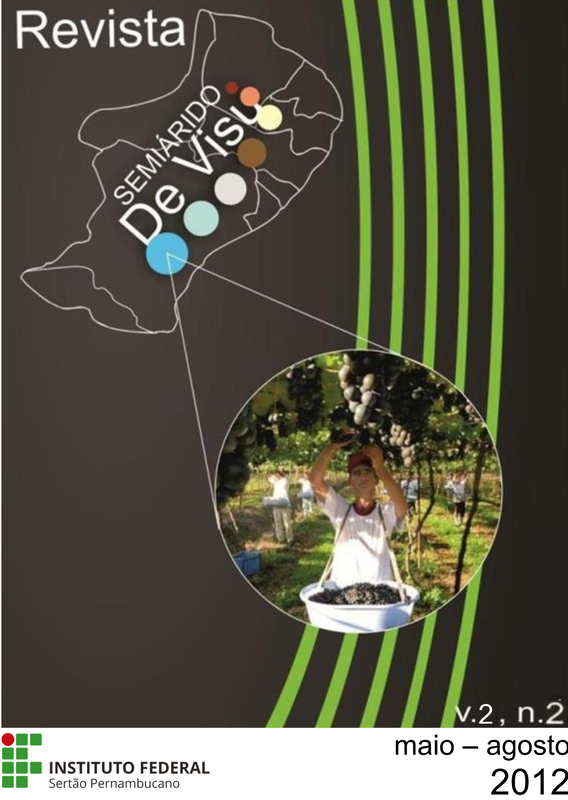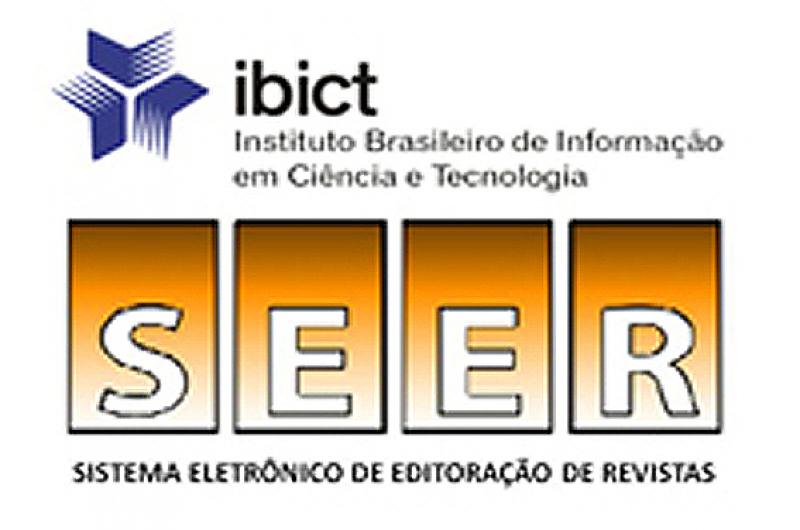Availability of fruits for caititu, Tayassu tajacu L. 1758 (Mammalia, Artiodactyla) in southern Bahia
Visualizações: 197DOI:
https://doi.org/10.31416/rsdv.v2i2.184Keywords:
Manipulation of wild animals, fruit trees, Atlantic ForestAbstract
Phenologies of ten fruit plant species, native or naturalized, was completed in four areas of “cabruca” (agroflorestal system that includes native high trees that shadow and trees producing of cocoa that need shade when they are young) and four areas of forest in farms located in the south of Bahia State. Registration of fruit consumption by caititu was made through land traps. The land traps with fruits like Polyandrococos caudensis, Lecythis pisonis,
Pouteria procera, Cecropia holeleuca, Artocarpus heterophyllus, Sloanea obtusifolia e Cnidosculus pubensces were the ones registering caititu traces. The species Artocarpus heterophyllus was considered the principal resource for ‘caitutu’
in this region, while Cecropia holeleuca was considered a limiting resource. The plantation of new fruit trees, A. heterophyllus and C. holeleuca, was prepared in order to make available the extensive or semi-intensive manipulation of the species, increasing the capacity of production in these areas, which could make possible the economic use of ‘caititus’ in the southern region of Bahia State and slow down the damage caused by wild animals in the same region.
References
ALEXANDRE, D. Y. Caractere saisonnier de la frutification dans une forêt hygrophile de Côte-d’Ivoire. Terre et la Vie-Revue d Ecologie Appliquee. 34 (3): 335-350. 1980.
ALTRICHTER, M., SAÉNZ, J. & CARRILLO, E. Chancos cariblancos (Tayassu tajacu) como depredadores y dispersores de semillas en el Parque Nacional Corcovado, Costa Rica. Brenesia, 52: 53-59. 1999.
ARGOLO, G. R. Análise do consumo e preferências de carne de animais silvestres para implantação de um programa de criação comercial na região cacaueira da Bahia. Dissertação de Mestrado. Programa de Pós- Graduação em Desenvolvimento Regional e Meio Ambiente. Universidade Estadual de Santa Cruz. Ilhéus. BA. 2002.
BECKER, M. & DALPONTE, J. C. Rastros de mamíferos silvestres brasileiros: um guia de campo. 2. ed. Brasília, Editora Universidade de Brasília, 1999, 180p.
BENCKE, C. S. C. & MORELLATO, L. P. Comparação de dois métodos de avaliação da fenologia de plantas, sua interpretação e representação. Revista Brasileira de Botânica, 25(3): 269-275. 2002.
BODMER, R. E., FANG, T. G. & IBANEZ, L. M. Ungulate Management and conservation in the Peruvian Amazon. Biology Conservation, 45: 303-310. 1988.
______. EISENBERG, J. F. & REDFORD, H. Hunting and the likelihood of extinction of Amazonian mammals. Biology Conservation, 11(2): 460-466. 1997.
CABRERA A. & YEPES, J. Mamíferos sudamericanos. 2 ed. Buenos Aires, Ediar, 1940, 238p.
CORN, J. L. & WARREN, R. J. Seasonal variation in nutritional indices of collared peccaries in south Texas. Jornal of Wildlife Management, 49: 57-65. 1985.
CULLEN JR. L., BODMER, R. E. & VALLADARES-PADUA, E. C. Effects of hunting in habitat fragments of the atlantic forests, Brazil. Biological Conservation, 75 (1): 49-56. 2000.
EDDY, T. A. Food and feeding patterns of the collared peccary in southern Arizona. Journal Wild Manage, 25(3): 243-257. 1961.
FLEMING, T. H. & WILLIAMS. C. F. Phenology, seed disperdal, and recruitment in Cecropia peltata (Moraceae) in Costa Rican Tropical dry forest. Journal of Tropical Ecology, 6: 163-178. 1990.
FRAGOSO, J. M. V. Perception of scale and resource partitioning by peccaries: behavioral causes and ecological implications. Journal of Mammalogy , 80(3): 993-1003. 1999.
FRANKIE, G. W., BAKER, H. G., & OPLER, P. A. Comparative phonological studies of trees in tropical wet and dry forests in the lowlands of Costa Rica. Jornal of Ecology ,62: 881-919. 1974.
JANZEN, D. H. Tropical blackwater rivers, animals and mast fruititng by the Dipterocarpaceae. Biotropica, 6: 69-103. 1974.
JUDAS, J. & HENRY, O. Seasonal variation of home range of collared peccary in tropical rain forest of French Guiana. Journal of Wildlife Management, 63(2): 546-552. 1999.
KEUROGHLIAN A., EATON D. P. & LONGLAND, W. S. Area use by white-lipped and collared peccaries (Tayassu pecari and Tayassu tajacu) in a tropical forest fragment. Biological Conservation, 120(3): 411-425. 2004.
KILTIE, R. A. Bite force as basis for niche differentation between rain forest peccaries (Tayassu tajacu and Tayassu pecari). Journal of Tropical Biology and Conservation, 14: 188- 195. 1982.
LORENZI, HARRI. Árvores Brasileiras, Manual de Identificação e Cultivo de Plantas Arbóreas Nativas do Brasil. Vol. 01, 02 e 03. 5° Edição. 1994.
MACHADO, G. B. & ROCHA, A. G. P. O meio ambiente do cacau. Ops, 1(3): 30-33. 1996.
MAYER, J. J. & BRANDT, P. N. Identity, distribution, and natural history of the peccaries, Tayassuidae. In MARES, M. A., H. H. GENOWAYS. (eds.) Mammalian Biology In South America. Pittisburgh. Pymatuning Simposia. University of Pittsburgh. USA. 1982.
MORELLATO, L. P., RODRIGUES, C. R. R., LEITÃO-FILHO, H. F. E JOLY, C. A. Estudo comparativo de espécies arbóreas de floresta de altitude e floresta semidecídua na Serra do Japi. Jundiaí, São Paulo. Revista Brasileira de Botânica ,12: 85-98. 1989.
_____. & LEITÃO-FILHO, H. F. Estratégias fenológicas de espécies arbóreas em floresta semidecídua na Serra do Japi, Jundiaí, São Paulo. Revista Brasileira de Biologia, 50(1): 163-173. 1990.
NAIR, P. K. R. Classification of agroforestry systems. In: MACDICKEN, K. G., VERGARA, N. T. (eds.). Agroforestry: classification and management. New York, Wiley Intercience Publication, 1990, 382p.
______. & DAGAR, J. C. An approach to developing methodologies for evaluating agroforestry systems in India. Agroforestry Systems.16: 55-81. 1991.
NOGUEIRA-FILHO, S. L. G & LAVORENTI, A. O manejo do caitetu (Tayassu tajacu) e do queixada (Tayassu pecari) em cativeiro. In: VALLADARES-PADUA,C., R. E. BODMER, E L. CULLEN JR. (Org.). Manejo e Conservação da Vida Silvestre no Brasil. Manejo e conservação da vida silvestres no Brasil: CNPq, 1997, p.. 52-69.285p.
_____. & NOGUEIRA, S. S. C. Captive breeding programs as an alternative for wildlife conservation in Brazil. In: KIRSTEN, M. S., R. E. BODMER, J. M. FRAGOSO. People in nature: wildlife manegement and conservaton in Lati America. 1. ed. New York, Columbia University Press, 2004. p.171-190.
NOGUEIRA-NETO, P. A criação de animais indígenas vertebrados. São Paulo, Tecnapis, 1973, 327p.
PARDINI, R. Fragmentation and land use effects on terrestrial mammal community of the Atlantic Forest of Southeastern Bahia, Brazil. In: Maryland. Society for Conservation Biology Annual Meeting. 2000.
REDFORD, K. H. The empty forest. Bioscience ,42: 412-422. 1992. ROBINSON, J. G. & EISENBERG, J. F. Group size and foraging habits of the collared peccary Tayassu tajacu. Journal of Mammalogy, 66(1): 153-155. 1985.
SMYTH, J. D. The importance of mammals in neotropical forest management, In Colon, J. F. C. (ed.). Management of the forest of tropical america: prospects and technologies. United States Departament of Agriculture Forest Service. Rio Piedras. Puerto Rico. 135
- 152. 1979.
SOWLS, L. K. The Peccaries. Arizona, The university of Arizona Press. 1984, 251p.
______. Javelinas and other peccaries. Their biology, management, and use. 2. ed. Tucson, Texas A & M University Press, 1997, 325p.
TAVARES, L. H. D. História da Bahia. 6. ed. São Paulo, Ed. Ática, 1979, 207p.
TICER, C. L. D., OCKENFELS, R. A., MORRELL, T. E. & DEVOS JR., J. C. Habitat use and activity patterns of urban-dwelling javelin in Prescott, Arizona. Technique. Rep. 14. Arizona Game and Fish Department. Phoenix, Arizona, 1994, 234p.















